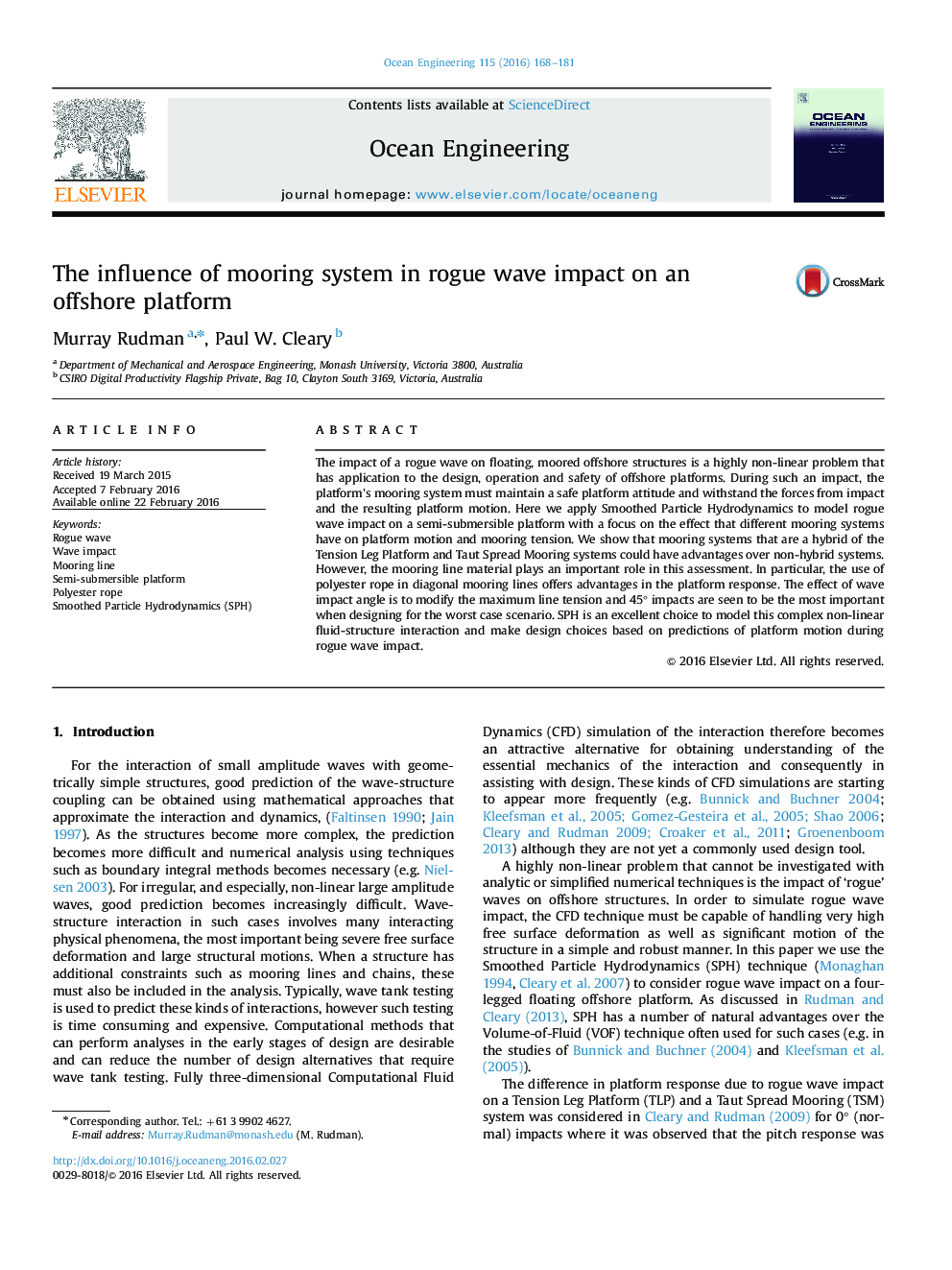| کد مقاله | کد نشریه | سال انتشار | مقاله انگلیسی | نسخه تمام متن |
|---|---|---|---|---|
| 1725200 | 1520675 | 2016 | 14 صفحه PDF | دانلود رایگان |
• SPH is used to model a breaking wave impacting a semi-submersible offshore platform.
• Diagonal polyester cables are shown to provide benefits over steel cables.
• Cable tension remains positive during wave impact for polyester cables.
• Wave impact angle does not have a significant effect on platform dynamics.
• Wave impact angle plays a significant role in determining peak mooring line tension.
The impact of a rogue wave on floating, moored offshore structures is a highly non-linear problem that has application to the design, operation and safety of offshore platforms. During such an impact, the platform׳s mooring system must maintain a safe platform attitude and withstand the forces from impact and the resulting platform motion. Here we apply Smoothed Particle Hydrodynamics to model rogue wave impact on a semi-submersible platform with a focus on the effect that different mooring systems have on platform motion and mooring tension. We show that mooring systems that are a hybrid of the Tension Leg Platform and Taut Spread Mooring systems could have advantages over non-hybrid systems. However, the mooring line material plays an important role in this assessment. In particular, the use of polyester rope in diagonal mooring lines offers advantages in the platform response. The effect of wave impact angle is to modify the maximum line tension and 45° impacts are seen to be the most important when designing for the worst case scenario. SPH is an excellent choice to model this complex non-linear fluid-structure interaction and make design choices based on predictions of platform motion during rogue wave impact.
Journal: Ocean Engineering - Volume 115, 15 March 2016, Pages 168–181
